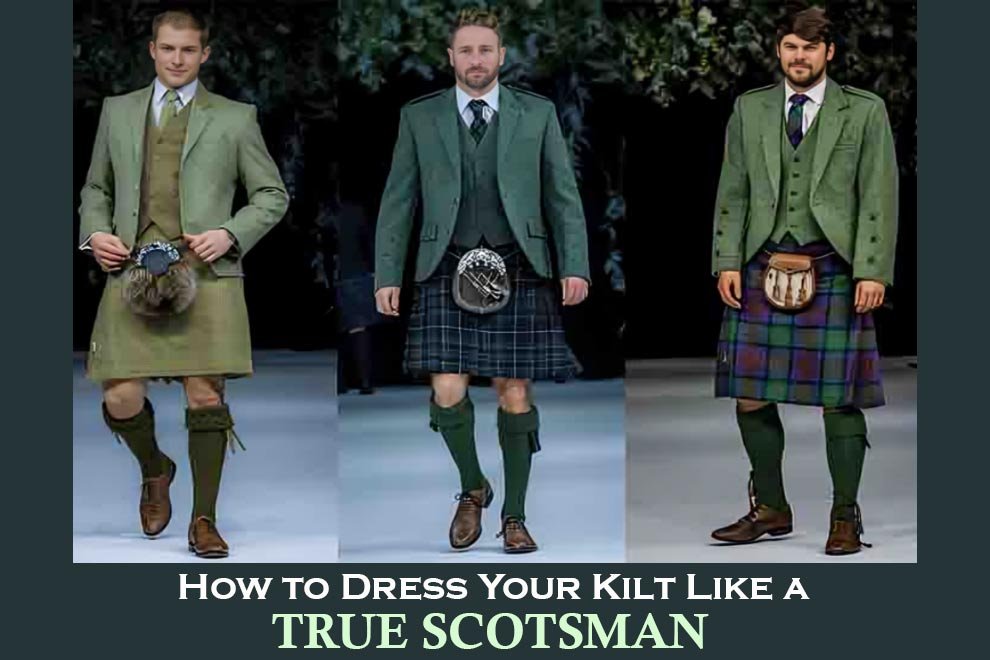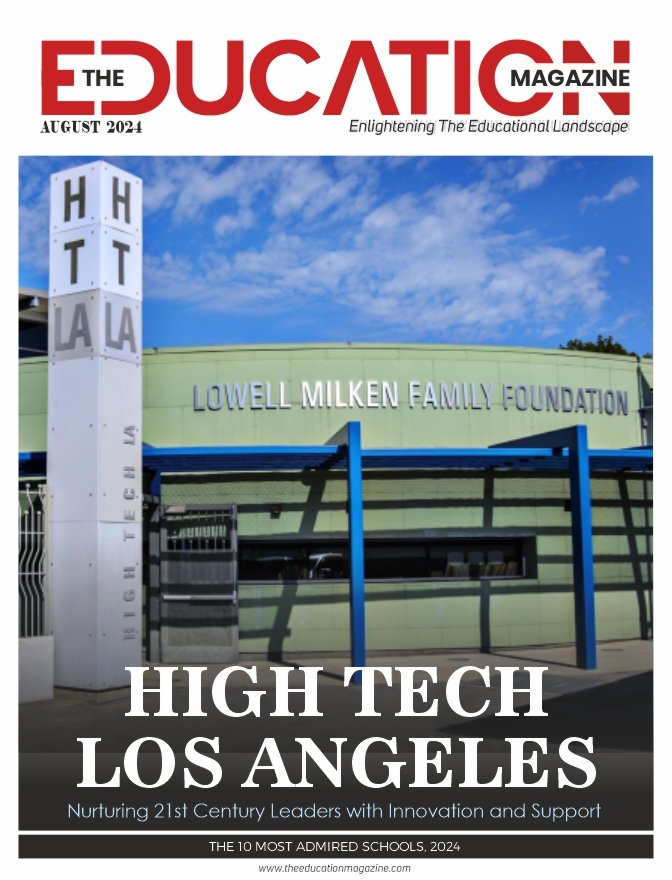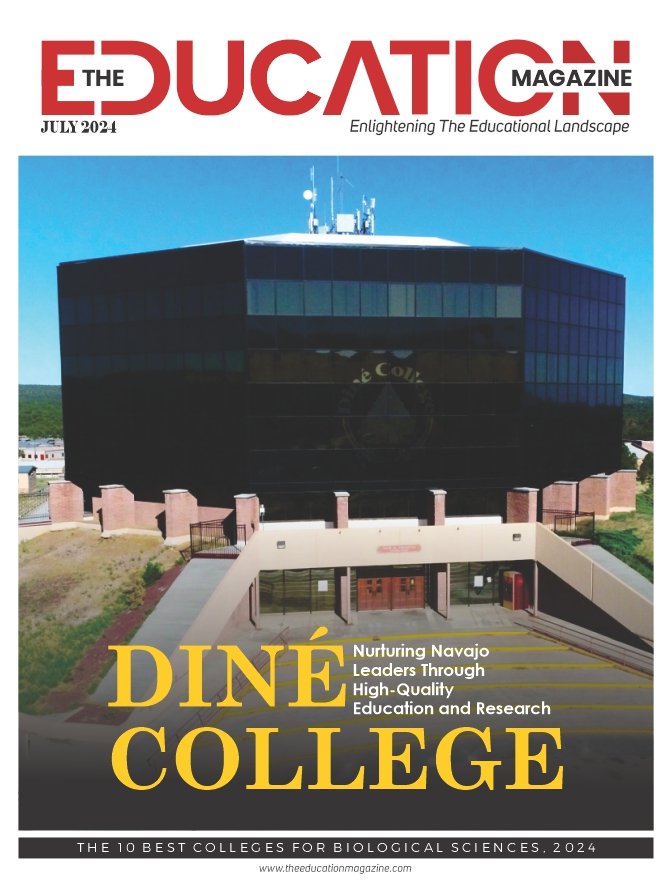So, you’ve decided to embrace the iconic and storied tradition of wearing a kilt. Fantastic! But to truly honor this timeless piece of Scottish heritage, it’s not just about slipping it on and heading out the door. The kilt is more than just a garment; it’s a symbol of Scottish identity, history, and pride. To dress kilt properly involves understanding its historical significance, mastering the essential components of traditional Highland dress, and knowing how to dress kilt appropriately for various occasions. From its origins in the 16th century as the versatile “great kilt” to the tailored versions we see today, the kilt has evolved into a powerful emblem of clan and regional affiliations. Each element, from the sporran to the ghillie brogues, plays a crucial role in completing the ensemble. This guide will take you through the essential steps of dressing in a kilt like a true Scotsman, ensuring that you not only look the part but also feel deeply connected to the rich tapestry of Scottish culture. Whether you’re preparing for a formal event, a casual gathering, or an outdoor adventure, you’ll learn how to dress kilt with authenticity and pride.
A Brief History of the Kilt
The kilt, a hallmark of Scottish tradition, has a storied history that traces back to the 16th century, although its origins extend further. The evolution of this iconic garment from the ancient “great kilt” to the modern tailored version is fascinating. Originally, the great kilt, or “belted plaid,” was a versatile piece of cloth that provided warmth and could be wrapped around the body and shoulder. Over the centuries, this early form of the kilt transformed into the more streamlined, tailored version known today. The kilt became deeply associated with Scottish clans, each represented by distinct tartan patterns. To truly appreciate the kilt, one must understand its historical significance as a symbol of Scottish identity and heritage. As you prepare to dress kilt in the traditional manner, recognizing its historical roots will deepen your connection to Scottish culture. Embracing this history adds an extra layer of meaning to your attire, making you not just a wearer of the kilt, but a participant in a long-standing tradition. Understanding this background ensures that when you dress kilt, you do so with respect and authenticity.
Essential Components of Traditional Highland Dress
To truly dress kilt like a Scotsman, you need to be familiar with the essential components of traditional Highland dress. Each element plays a crucial role in completing the ensemble and ensuring you look both authentic and polished. Here’s a detailed breakdown of the key components:
1. The Kilt: The kilt is the centerpiece of your outfit, made from high-quality wool and featuring a tartan pattern that represents your clan or region. The tartan pattern is not merely decorative; it signifies familial and regional affiliations, making the choice of tartan an important aspect of dressing in a kilt. Ensure that your kilt fits well and is tailored to your measurements for the best appearance and comfort.
2. The Sporran: The sporran is a decorative pouch worn at the front of the kilt. Traditionally made from leather or fur, it serves both a practical and aesthetic purpose. It’s used to carry small personal items, as the kilt itself has no pockets. The sporran should be positioned centrally, hanging from the front of the kilt, and secured with a chain or belt. There are various styles of sporrans, from plain leather to ornate with tassels or decorative metalwork, allowing you to choose one that suits the occasion.
3.Kilt Hose: Kilt hose are knee-high socks worn with the kilt. They are typically made from wool or cotton and come in various colors, though they are usually matched to complement the tartan of the kilt. The hose should be pulled up to just below the knee, creating a clean line that complements the kilt. Kilt hose are often worn with flashes—small strips of tartan fabric that hang from the top of the hose and are held in place by garter ties.
4. Ghillie Brogues: Ghillie brogues are traditional Scottish shoes characterized by their long laces that wrap around the ankles. These shoes are designed to be both practical and stylish, with a distinctive criss cross lacing pattern that adds to their aesthetic appeal. Ghillie brogues are typically made from leather and should be polished to maintain a sharp appearance.
5. Kilt Pin: The kilt pin is a decorative pin used to secure the front apron of the kilt. It prevents the fabric from blowing open and adds a touch of elegance to the ensemble. The pin should be placed through the top layer of the kilt fabric, approximately 4 inches from the bottom edge and a couple of inches from the side. The design of the kilt pin can vary, with options ranging from simple metal pins to more elaborate designs featuring Scottish motifs.
6. Belt & Buckle: A belt and buckle are worn over the kilt to add structure and complete the look. The belt should be positioned at the waist, over the top of the kilt, and the buckle should be centered for a balanced appearance. The belt can be plain or decorated, depending on the level of formality required.
7. Jacket & Waistcoat: For formal occasions, such as weddings or black-tie events, a jacket and waistcoat are essential. The Prince Charlie jacket is the most formal option, featuring a short, fitted cut and often adorned with silver or gold buttons. The Argyll jacket is a slightly less formal alternative, with a more relaxed fit and fewer embellishments. The waistcoat, which matches the jacket, should fit snugly but comfortably.
Step-by-Step Guide to Dressing in a Kilt
To dress in a kilt like a true Scotsman, start by selecting a high-quality wool kilt with a tartan pattern that represents your heritage or personal preference. Prepare your undergarments, with the traditional option being commando, though modern comfort may dictate otherwise. Wrap the kilt around your waist with the pleats at the back and the flat apron at the front, securing the internal strap first followed by the outer straps so the kilt fits snugly and falls to the middle of your knees. Attach the sporran in the center, just below the belt buckle, and pull on the knee-high kilt hose, ensuring they are properly positioned with flashes attached at the top. Emulating the authentic style of Scots in kilts, lace up your ghillie brogues in a decorative crisscross pattern, then fasten the kilt pin through the top layer of fabric about 4 inches from the bottom edge. Add the belt and buckle around your waist for structure, and if attending a formal event, wear a Prince Charlie or Argyll jacket and waistcoat, buttoning up the waistcoat comfortably. Finally, tuck the sgian dubh into your right kilt hose with the handle visible, completing the traditional ensemble. This approach ensures you honor this rich tradition with every step.
Dressing for Different Occasions
Now that you’re dressed to the nines, let’s talk about when and how to wear your kilt for different occasions.
Formal Events
For weddings, formal dinners, and other black-tie events, the full Highland dress is appropriate. This ensemble includes the kilt, sporran, kilt hose, flashes, ghillie brogues, kilt pin, belt and buckle, jacket, waistcoat, and sgian dubh. The Prince Charlie jacket and waistcoat are particularly suited for these occasions due to their elegant and tailored appearance. Complete the look with a bow tie or cravat that complements the tartan of your kilt. Ensure all elements are polished and coordinated, reflecting the dignified nature of the event. Dressing in full Highland dress honors tradition and adds a distinguished flair to any formal gathering.
Casual Gatherings
For less formal occasions, such as ceilidhs (traditional Scottish dances) or casual parties, you can opt for a more relaxed look. Pair your kilt with a simple shirt and a casual jacket, such as an Argyll jacket, which provides a smart yet comfortable appearance. Ghillie brogues are still a great choice, but you can skip the waistcoat and sgian dubh for a more laid-back vibe. A casual leather sporran and a plain kilt pin can complete the outfit. This approach maintains the essence of traditional Scottish attire while ensuring you remain comfortable and appropriately dressed for a more relaxed setting.
Outdoor Activities
When wearing a kilt for outdoor activities, such as hiking or attending Highland games, practicality is key. Opt for a utility kilt made from durable materials that can withstand the elements and the demands of physical activity. Pair it with sturdy boots to provide proper support and protection. A casual sporran is recommended for convenience, allowing you to carry essentials without hindering your movement. Consider wearing a moisture-wicking shirt and a lightweight jacket to stay comfortable in varying weather conditions. This functional approach ensures you can enjoy outdoor activities while proudly displaying your Scottish heritage.
Conclusion
Dressing in a kilt like a true Scotsman is a journey through history, culture, and personal expression. Every step, from selecting the right tartan to mastering the intricate details of the traditional Highland dress, offers a deeper connection to Scottish heritage. Wearing a kilt is not just about donning a piece of clothing; it’s about embracing a tradition that spans centuries and signifies pride and identity. By understanding the historical roots and essential components of the kilt, you ensure that you wear it with respect and authenticity. Whether you’re attending a formal event, a casual gathering, or engaging in outdoor activities, the kilt allows you to showcase your appreciation for Scottish culture. So, take your time, embrace the process, and wear your kilt with pride. You’re not merely a wearer of the kilt; you’re a participant in a long-standing tradition, honoring and preserving a significant aspect of Scottish heritage. Make the experience your own and carry the legacy forward with dignity and pride.
So, you’ve decided to embrace the iconic and storied tradition of wearing a kilt. Fantastic! But to truly honor this timeless piece of Scottish heritage, it’s not just about slipping it on and heading out the door. The kilt is more than just a garment; it’s a symbol of Scottish identity, history, and pride. To dress kilt properly involves understanding its historical significance, mastering the essential components of traditional Highland dress, and knowing how to dress kilt appropriately for various occasions. From its origins in the 16th century as the versatile “great kilt” to the tailored versions we see today, the kilt has evolved into a powerful emblem of clan and regional affiliations. Each element, from the sporran to the ghillie brogues, plays a crucial role in completing the ensemble. This guide will take you through the essential steps of dressing in a kilt like a true Scotsman, ensuring that you not only look the part but also feel deeply connected to the rich tapestry of Scottish culture. Whether you’re preparing for a formal event, a casual gathering, or an outdoor adventure, you’ll learn how to dress kilt with authenticity and pride.
A Brief History of the Kilt
The kilt, a hallmark of Scottish tradition, has a storied history that traces back to the 16th century, although its origins extend further. The evolution of this iconic garment from the ancient “great kilt” to the modern tailored version is fascinating. Originally, the great kilt, or “belted plaid,” was a versatile piece of cloth that provided warmth and could be wrapped around the body and shoulder. Over the centuries, this early form of the kilt transformed into the more streamlined, tailored version known today. The kilt became deeply associated with Scottish clans, each represented by distinct tartan patterns. To truly appreciate the kilt, one must understand its historical significance as a symbol of Scottish identity and heritage. As you prepare to dress kilt in the traditional manner, recognizing its historical roots will deepen your connection to Scottish culture. Embracing this history adds an extra layer of meaning to your attire, making you not just a wearer of the kilt, but a participant in a long-standing tradition. Understanding this background ensures that when you dress kilt, you do so with respect and authenticity.
Essential Components of Traditional Highland Dress
To truly dress kilt like a Scotsman, you need to be familiar with the essential components of traditional Highland dress. Each element plays a crucial role in completing the ensemble and ensuring you look both authentic and polished. Here’s a detailed breakdown of the key components:
1. The Kilt: The kilt is the centerpiece of your outfit, made from high-quality wool and featuring a tartan pattern that represents your clan or region. The tartan pattern is not merely decorative; it signifies familial and regional affiliations, making the choice of tartan an important aspect of dressing in a kilt. Ensure that your kilt fits well and is tailored to your measurements for the best appearance and comfort.
2. The Sporran: The sporran is a decorative pouch worn at the front of the kilt. Traditionally made from leather or fur, it serves both a practical and aesthetic purpose. It’s used to carry small personal items, as the kilt itself has no pockets. The sporran should be positioned centrally, hanging from the front of the kilt, and secured with a chain or belt. There are various styles of sporrans, from plain leather to ornate with tassels or decorative metalwork, allowing you to choose one that suits the occasion.
3.Kilt Hose: Kilt hose are knee-high socks worn with the kilt. They are typically made from wool or cotton and come in various colors, though they are usually matched to complement the tartan of the kilt. The hose should be pulled up to just below the knee, creating a clean line that complements the kilt. Kilt hose are often worn with flashes—small strips of tartan fabric that hang from the top of the hose and are held in place by garter ties.
4. Ghillie Brogues: Ghillie brogues are traditional Scottish shoes characterized by their long laces that wrap around the ankles. These shoes are designed to be both practical and stylish, with a distinctive criss cross lacing pattern that adds to their aesthetic appeal. Ghillie brogues are typically made from leather and should be polished to maintain a sharp appearance.
5. Kilt Pin: The kilt pin is a decorative pin used to secure the front apron of the kilt. It prevents the fabric from blowing open and adds a touch of elegance to the ensemble. The pin should be placed through the top layer of the kilt fabric, approximately 4 inches from the bottom edge and a couple of inches from the side. The design of the kilt pin can vary, with options ranging from simple metal pins to more elaborate designs featuring Scottish motifs.
6. Belt & Buckle: A belt and buckle are worn over the kilt to add structure and complete the look. The belt should be positioned at the waist, over the top of the kilt, and the buckle should be centered for a balanced appearance. The belt can be plain or decorated, depending on the level of formality required.
7. Jacket & Waistcoat: For formal occasions, such as weddings or black-tie events, a jacket and waistcoat are essential. The Prince Charlie jacket is the most formal option, featuring a short, fitted cut and often adorned with silver or gold buttons. The Argyll jacket is a slightly less formal alternative, with a more relaxed fit and fewer embellishments. The waistcoat, which matches the jacket, should fit snugly but comfortably.
Step-by-Step Guide to Dressing in a Kilt
To dress in a kilt like a true Scotsman, start by selecting a high-quality wool kilt with a tartan pattern that represents your heritage or personal preference. Prepare your undergarments, with the traditional option being commando, though modern comfort may dictate otherwise. Wrap the kilt around your waist with the pleats at the back and the flat apron at the front, securing the internal strap first followed by the outer straps so the kilt fits snugly and falls to the middle of your knees. Attach the sporran in the center, just below the belt buckle, and pull on the knee-high kilt hose, ensuring they are properly positioned with flashes attached at the top. Emulating the authentic style of Scots in kilts, lace up your ghillie brogues in a decorative crisscross pattern, then fasten the kilt pin through the top layer of fabric about 4 inches from the bottom edge. Add the belt and buckle around your waist for structure, and if attending a formal event, wear a Prince Charlie or Argyll jacket and waistcoat, buttoning up the waistcoat comfortably. Finally, tuck the sgian dubh into your right kilt hose with the handle visible, completing the traditional ensemble. This approach ensures you honor this rich tradition with every step.
Dressing for Different Occasions
Now that you’re dressed to the nines, let’s talk about when and how to wear your kilt for different occasions.
Formal Events
For weddings, formal dinners, and other black-tie events, the full Highland dress is appropriate. This ensemble includes the kilt, sporran, kilt hose, flashes, ghillie brogues, kilt pin, belt and buckle, jacket, waistcoat, and sgian dubh. The Prince Charlie jacket and waistcoat are particularly suited for these occasions due to their elegant and tailored appearance. Complete the look with a bow tie or cravat that complements the tartan of your kilt. Ensure all elements are polished and coordinated, reflecting the dignified nature of the event. Dressing in full Highland dress honors tradition and adds a distinguished flair to any formal gathering.
Casual Gatherings
For less formal occasions, such as ceilidhs (traditional Scottish dances) or casual parties, you can opt for a more relaxed look. Pair your kilt with a simple shirt and a casual jacket, such as an Argyll jacket, which provides a smart yet comfortable appearance. Ghillie brogues are still a great choice, but you can skip the waistcoat and sgian dubh for a more laid-back vibe. A casual leather sporran and a plain kilt pin can complete the outfit. This approach maintains the essence of traditional Scottish attire while ensuring you remain comfortable and appropriately dressed for a more relaxed setting.
Outdoor Activities
When wearing a kilt for outdoor activities, such as hiking or attending Highland games, practicality is key. Opt for a utility kilt made from durable materials that can withstand the elements and the demands of physical activity. Pair it with sturdy boots to provide proper support and protection. A casual sporran is recommended for convenience, allowing you to carry essentials without hindering your movement. Consider wearing a moisture-wicking shirt and a lightweight jacket to stay comfortable in varying weather conditions. This functional approach ensures you can enjoy outdoor activities while proudly displaying your Scottish heritage.
Conclusion
Dressing in a kilt like a true Scotsman is a journey through history, culture, and personal expression. Every step, from selecting the right tartan to mastering the intricate details of the traditional Highland dress, offers a deeper connection to Scottish heritage. Wearing a kilt is not just about donning a piece of clothing; it’s about embracing a tradition that spans centuries and signifies pride and identity. By understanding the historical roots and essential components of the kilt, you ensure that you wear it with respect and authenticity. Whether you’re attending a formal event, a casual gathering, or engaging in outdoor activities, the kilt allows you to showcase your appreciation for Scottish culture. So, take your time, embrace the process, and wear your kilt with pride. You’re not merely a wearer of the kilt; you’re a participant in a long-standing tradition, honoring and preserving a significant aspect of Scottish heritage. Make the experience your own and carry the legacy forward with dignity and pride.










